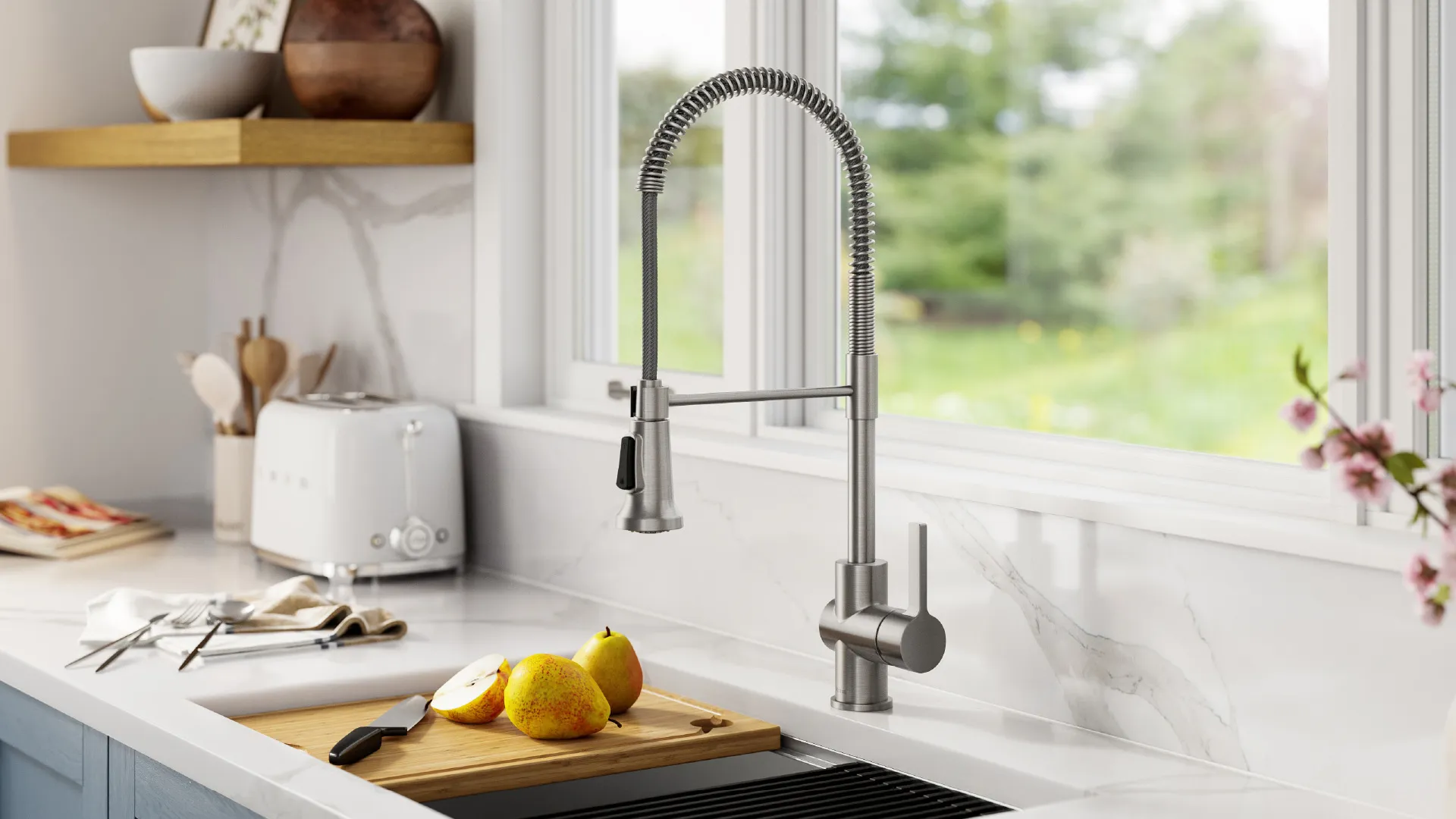A commercial kitchen faucet is an essential fixture in any restaurant, cafeteria, or food service facility. It provides a reliable source of clean water for washing, rinsing, and other kitchen tasks. While hiring a professional plumber to install a commercial kitchen faucet can be costly, installing it yourself is a cost-effective alternative. This article will give a step-by-step guide for the DIY installation of a commercial kitchen faucet, including the required tools, pre-installation steps, installation process, and troubleshooting tips.
Before you begin the installation process, following the necessary safety measures is essential. You must wear protective gear, like gloves and safety glasses, and turn off the water supply to the faucet.
Required Tools
To install a commercial kitchen faucet, you will need the following tools and materials:
- Adjustable wrench
- Basin wrench
- Phillips and flathead screwdrivers
- Plumber's putty
- Teflon tape
- Silicone caulk
- Safety glasses
- Gloves
- Towels
Pre-Installation Steps
Before installing the new commercial kitchen faucet, remove the old one. Follow these steps:
1. Shut Off the Water Supply
Find the water connection valves under the sink and turn them off by turning the handles clockwise.
2. Remove the Old Faucet
Use an adjustable basin wrench to loosen the nuts that maintain the old faucet in place. Lift the faucet off the sink.
3. Clean the Installation Area
Use a clean towel to wipe away any residue or debris from the sink surface.
Installation Steps
Now that you have prepared the sink, installing the new commercial kitchen faucet is time. Follow these steps:
1. Install the Base Plate
Place it over the mounting holes on the sink and secure it with the mounting hardware provided with the faucet.
2. Install the Gasket and Mounting Bracket
Install the gasket onto the mounting bracket and secure it onto the base plate.
3. Install the Faucet
Insert the faucet through the mounting bracket and base plate. Secure it with the mounting hardware provided with the faucet.
4. Connect the Water Supply Lines
Connect the cold and hot water connection lines to the appropriate valves on the faucet. Utilize Teflon tape on the threads of the connections to prevent leaks.
Post-Installation Steps
After completing the installation process, it's essential to take a few post-installation steps to ensure the faucet works correctly.
1. Turn On the Water Supply
Turn the valves back on by turning the handles counterclockwise.
2. Check for Leaks
Turn on the faucet, then check for any leaks around the base, connections, or water lines.
3. Test the Faucet
Test the faucet by running hot and cold water. Ensure the water flow is consistent and the handles are functioning correctly.
Troubleshooting
If you face any trouble situation during the procedure of installation or notice leaks after turning on the water supply, follow these troubleshooting tips:
1. Check for Loose Connections
Use an adjustable wrench to tighten any loose connections.
2. Reapply the Plumber's Putty or Teflon Tape
If leaks around the base or connections, remove the faucet and reapply the putty or Teflon tape to create a better seal.
3. Replace Damaged Parts
If you see any damaged parts, such as a cracked O-ring or damaged washer, replace them with new ones.
Frequently Asked Questions
Q: Is it difficult to install a commercial kitchen faucet on my own?
A: While it may seem intimidating, installing a commercial kitchen faucet can be manageable with the right tools and instructions. Following the manufacturer's guidelines and taking proper safety precautions can help simplify the process.
Q: What tools do I need for DIY installation?
A: Typical tools needed include adjustable wrenches, screwdrivers, plumber's tape, plumber's putty or silicone sealant, and possibly a basin wrench. Refer to the manufacturer's instructions for any specific tools required for your faucet model.
Q: How long does it take to install a commercial kitchen faucet?
A: The time required for installation can vary depending on factors such as your level of experience, the complexity of the faucet design, and any unforeseen complications. On average, installation can take anywhere from 30 minutes to a few hours.
Q: Do I need to shut off the water supply before installing a new faucet?
A: Yes, it is essential to shut off the water supply to the kitchen sink before beginning the installation process. This prevents accidental flooding and ensures a safer working environment.
Q: Can I reuse the old water supply lines with my new faucet?
A: It is generally recommended to replace old water supply lines with new ones when installing a new faucet. This helps prevent leaks and ensures compatibility with the new faucet's connections.
Q: What should I do if I encounter leaks after installing the faucet?
A: If you notice leaks after installation, first check all connections to ensure they are properly tightened. If leaks persist, try applying plumber's tape to threaded connections or reseating and tightening the connections as needed. If leaks continue, consult the manufacturer's troubleshooting guide or seek professional assistance.
Q: Can I install a commercial kitchen faucet if I have limited plumbing experience?
A: While some plumbing experience can be helpful, many DIY enthusiasts successfully install commercial kitchen faucets with little to no prior experience. Following detailed instructions, taking your time, and being cautious can help mitigate potential issues. If you feel uncertain, consider consulting a professional plumber for assistance.
Conclusion
Installing a commercial kitchen faucet can be daunting, but with the proper tools and steps, you can install it yourself. By doing it yourself, you can preserve money and ensure your commercial kitchen faucet is installed correctly. Remember to follow safety measures throughout the installation and take the necessary post-installation steps to ensure the faucet works perfectly.


